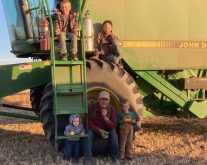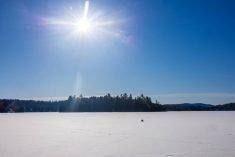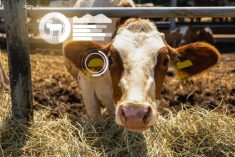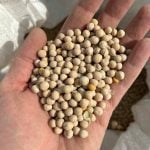In the first four parts of this multi-part series, we stressed the importance of understanding and committing to very clear goals prior to entering into retirement planning. Part two stressed the importance of calculating your financial needs for retirement and your options to generate cash by earning cash with assets or generating cash through the sale of assets. Part three shed light on the tax considerations and implications to the numerous funding sources. Part four addressed the main risks associated with a successful succession plan and mitigating factors or strategies that should be considered.
Read Also

Gentle treatments for pain in the neck
Heading toward year-end, people unknowingly tense up against the cold and busyness, causing neck pain that can often be treated with appropriate support and gentle mobility, athletic therapist Kathlyn Hossack says.
In this article we will meet Henry and Ima Warkenamor, a couple from ourGrainewscommunity. We’re not sure if they are Mennonite, Irish or a hybrid of some sort but one thing is clear, they are ready to quit farming. Henry and Ima have operated a farm that has been in the Warkenamor family for over 100 years. They indicated the following details:
They do not want to sell land.
Henry &Ima are 71 years old.
Two children, neither are interested in farming (retirement plan not succession).
Decided to retire in two years and live on interest and crop share rent.
Concerned repayment of mortgage debt will deplete retirement cash.
RETIREMENT OPTIONS
We looked at two plans for the Warkenamors.
1) Plan one
Sell Inventory over two years.
Have machinery auction sale first year.
Rent out land crop share: $50,000.
Convert RRSP to RRIF. 2) Plan Two
Incorporate.
Roll inventory into corporation and company sells over two years.
Roll machinery to corporation and company sells machinery in auction sale in year 1.
Roll land to corporation: crystallize capital gains.
Company rents out land crop share: $50,000.
Convert RRSP to RRIF.
TAX IMPLICATIONS
We completed three years of pro forma financial statements to look at the ending net worth in both situations with some very basic tax calculations. The ending result can be summarized by the table at right.
Keep in mind this is one example — the message here is not to rush home and incorporate, but that it’s worth considering.
Appreciate that every situation is completely unique and different decisions will be made.
The message is:
1. Understand your philosophy in business and succession.
2. Clearly set goals for your retirement (Write them down, that way you won’t forget them).
3. Understand all of the tools and strategies available to you. Use professionals to ensure complete understanding of options and implications, sometimes they equal hundreds of thousands of dollars.
4. Commit to a plan
5. Implement the plan.
OAS clawback
24,000
AndrewDeRuyckandMarkSloanemanage twofarmingoperationsinsouthern ManitobaandarepartnersinRightChoice ManagementConsulting.Withover25years ofcumulativeexperience,theyoffersupport infarmmanagement,financialmanagement, strategicplanningandmediationservices. Theycanbereachedat [email protected] and [email protected] or204825-7392 and204-825-8443
———
$550,000
THEIR BALANCE SHEET IS AS FOLLOWS: ASSETS
LIABILITIES
Inventory
RRSP
Machinery (UCC $650,000) $800,000
Land (ACB $200,000)
Total
Net Worth:
*ACB stands for adjusted cost base and UCC stands for unclaimed capital cost.
$400,000
$1,700,000 $3,450,000
$3,050,000
Mortgage
Total
$400,000
$400,000
———
TOTAL
$142,800
PLAN ONE
PLAN TWO TOTAL TAX PAID (OVER THREE YEARS)
Total tax paid (three years)
TOTAL
Resulting Net Worth
(in year three)
OAS clawback
Additional
accounting /legal
Additional
interest earned
Resulting Net Worth
(in year three)
$387,673
$411,673
$2,744,029
$12,000
$15,000
($15,652)
$154,148
$3,001,554














